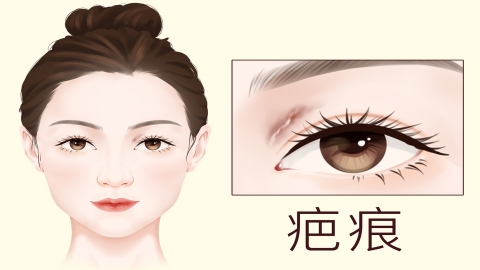How to deal with keloid-prone skin
Scar-prone constitution refers to a condition in which individuals tend to develop abnormal overgrowth of scar tissue during the wound healing process, commonly known as keloids or hypertrophic scars. This constitution is usually determined by genetic factors. Management strategies include dietary adjustments, avoiding injuries, daily skincare, physical therapy, and traditional Chinese medicine treatments. The specific approaches are analyzed as follows:

1. Dietary Adjustments: Individuals with a scar-prone constitution should increase their intake of foods rich in vitamin C and vitamin E, such as strawberries, oranges, and almonds. These foods help promote skin metabolism and repair. At the same time, it is important to avoid consuming spicy, greasy, or irritating foods, such as chili peppers, ginger, and fried foods, which may trigger scar formation.
2. Avoiding Injuries: Individuals with a scar-prone constitution should strive to avoid skin injuries in daily life, as even minor skin damage can lead to keloid formation during the healing process. Therefore, extra care should be taken to protect the skin, and procedures such as ear piercing or double eyelid surgery that may leave scars should be avoided.
3. Daily Skincare: If an injury occurs unintentionally, individuals with a scar-prone constitution should take appropriate care measures during the wound healing process. Products such as silicone gel sheets can be used to maintain moisture in the scar, reduce capillary activity, and alleviate inflammatory responses, thereby inhibiting scar proliferation. Additionally, keeping the wound dry and clean to prevent infection is crucial.
4. Physical Therapy: For existing scars, individuals with a scar-prone constitution may consider undergoing physical treatments such as laser therapy or microneedle rollers. These methods can soften scar tissue and promote smoother, more aesthetically pleasing skin recovery. However, physical therapy should be conducted under the guidance of a qualified physician to ensure safety and effectiveness.
5. Traditional Chinese Medicine (TCM) Therapy: Traditional Chinese medicine approaches to treating scar-prone constitution include the use of herbal ointments and acupuncture. These methods aim to regulate the body's internal environment and improve the pathological condition associated with a scar-prone constitution. TCM treatments should be administered under the guidance of a qualified TCM practitioner to avoid blind usage.
Individuals with a scar-prone constitution need to pay special attention to protecting their skin and avoiding injuries. If scars have already formed, appropriate treatment methods can be selected based on individual circumstances to improve the condition.





